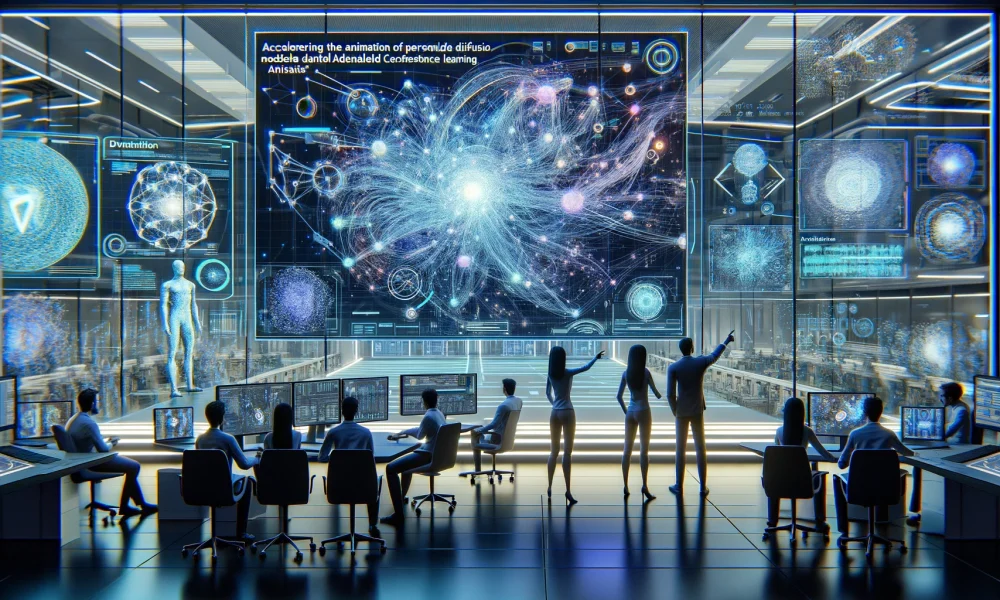The Revolutionary Impact of AI on Image Generation
AI has revolutionized various industries, but its impact on image generation is truly remarkable. What was once a task reserved for professional artists or complex graphic design tools can now be effortlessly achieved with just a few words and the right AI model.
Introducing Stable Diffusion: Redefining Visual Creation
Stable Diffusion has been a frontrunner in transforming the way we approach visual creation. By focusing on accessibility, this platform has made AI-powered image generation available to a wider audience, from developers to hobbyists, and has paved the way for innovation in marketing, entertainment, education, and scientific research.
Evolution of Stable Diffusion: From 1.0 to 3.5
Throughout its versions, Stable Diffusion has listened to user feedback and continually enhanced its features. The latest version, Stable Diffusion 3.5, surpasses its predecessors by delivering better image quality, faster processing, and improved compatibility, setting a new standard for AI-generated images.
Stable Diffusion 3.5: A Game-Changer in AI Image Generation
Unlike previous updates, Stable Diffusion 3.5 introduces significant improvements that enhance performance and accessibility, making it ideal for professionals and hobbyists alike. With optimized performance for consumer-grade systems and a Turbo variant for faster processing, this version expands the possibilities of AI image generation.
Core Enhancements in Stable Diffusion 3.5
1. Enhanced Image Quality
The latest version excels in producing sharper, more detailed, and realistic images, making it a top choice for professionals seeking high-quality visuals.
2. Greater Diversity in Outputs
Stable Diffusion 3.5 offers a wider range of outputs from the same prompt, allowing users to explore different creative ideas seamlessly.
3. Improved Accessibility
Optimized for consumer-grade hardware, version 3.5 ensures that advanced AI tools are accessible to a broader audience without the need for high-end GPUs.
Technical Advances in Stable Diffusion 3.5
Stable Diffusion 3.5 integrates advanced technical features like the Multimodal Diffusion Transformer architecture, enhancing training stability and output consistency for complex prompts.
Practical Uses of Stable Diffusion 3.5
From virtual and augmented reality to e-learning and fashion design, Stable Diffusion 3.5 offers a plethora of applications across various industries, making it a versatile tool for creative, professional, and educational endeavors.
The Future of AI Creativity: Stable Diffusion 3.5
Stable Diffusion 3.5 embodies the convergence of advanced features and user-friendly design, making AI creativity accessible and practical for real-world applications. With improved quality, faster processing, and enhanced compatibility, this tool is a game-changer in the world of AI image generation.
-
What is Stable Diffusion 3.5 and how does it differ from previous versions?
Stable Diffusion 3.5 is a cutting-edge AI technology that sets a new standard for image generation. It improves upon previous versions by introducing innovative techniques that significantly enhance the stability and quality of generated images. -
How does Stable Diffusion 3.5 redefine AI image generation?
Stable Diffusion 3.5 incorporates advanced algorithms and neural network architectures that improve the overall reliability and consistency of image generation. This results in more realistic and visually pleasing images compared to traditional AI-generated images. -
What are some key features of Stable Diffusion 3.5?
Some key features of Stable Diffusion 3.5 include improved image sharpness, reduced artifacts, enhanced color accuracy, and better control over the style and content of generated images. These features make it an indispensable tool for various applications in industries like design, marketing, and entertainment. -
How can Stable Diffusion 3.5 benefit businesses and creatives?
Businesses and creatives can leverage Stable Diffusion 3.5 to streamline their design and content creation processes. By generating high-quality images with minimal effort, they can save time and resources while ensuring consistent branding and visual appeal across their projects. - Is Stable Diffusion 3.5 easy to implement and integrate into existing workflows?
Stable Diffusion 3.5 is designed to be user-friendly and compatible with different platforms and software systems. It can be easily integrated into existing workflows, allowing users to seamlessly incorporate AI-generated images into their creative projects without any significant disruptions or learning curve.






